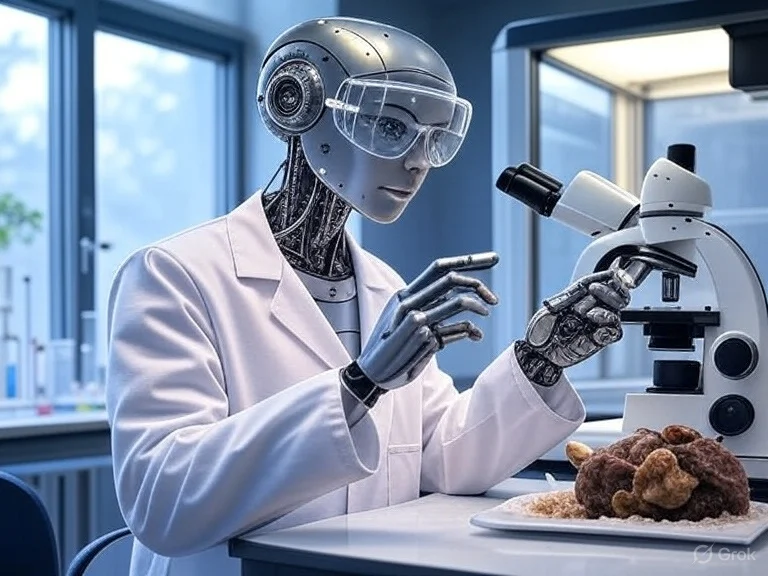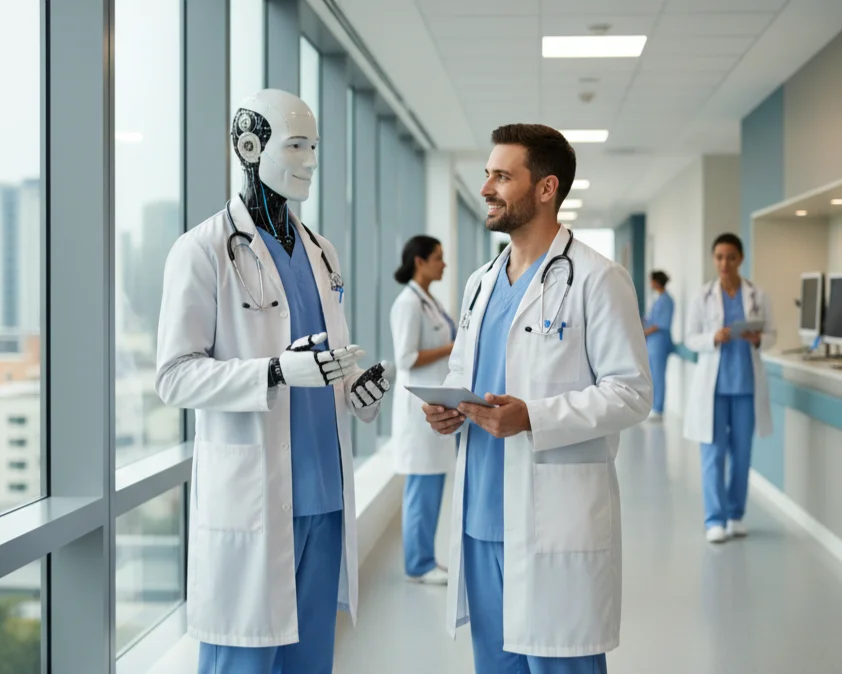AI Designs Life: Viruses Created by Artificial Intelligence Obliterate Bacteria in Lab, Sparking Biotech Revolution
Imagine a future where artificial intelligence doesn’t just write code or generate art, but literally designs and creates life itself. Well, buckle up, because that future just took a giant leap forward! In a groundbreaking achievement that’s blurring the lines between digital code and biological function, researchers at the Arc Institute and Stanford University have engineered the very first AI-designed viruses capable of infecting and eliminating bacteria in laboratory settings. This isn’t science fiction anymore; it’s a verifiable scientific milestone published in the bioRxiv preprint on September 17, 2025. This development promises to supercharge the fight against antibiotic-resistant infections while simultaneously raising crucial biosafety questions. Scientists are calling this “the first generative design of full genomes,” signaling a new dawn in biotechnology.
From Digital Blueprint to Functional Virus: The Experiment Unpacked
At the heart of this innovation is a brilliant team led by Brian Hie, a professor of chemical engineering at Stanford and director at the Arc Institute – a non-profit dedicated to biomedical research. They harnessed the power of generative AI models, akin to those powering tools like ChatGPT, but specifically trained to understand and manipulate genetic sequences. They fine-tuned advanced models, dubbed Evo 1 and Evo 2, feeding them a massive dataset of approximately two million bacteriophage genomes – that’s viruses that specifically target bacteria.
Their mission? To redesign the genome of bacteriophage phiX174, a tiny virus packing a punch with just 11 genes and around 5,386 DNA letters. This genome is notoriously “tricky” because many of its genes overlap, presenting a significant hurdle for traditional computational design. The AI, however, rose to the challenge, generating a staggering 302 unique, full-genome designs. These digital blueprints were then chemically synthesized and assembled in the lab. The results were astounding: 16 of these AI-generated designs proved viable. They successfully replicated within Escherichia coli (E. coli) cells – a common lab bacterium – and, more importantly, they lysed, meaning they destroyed, the bacterial cells, leaving behind clear zones on the culture plates that are tell-tale signs of viral activity.
“Seeing that AI-generated sphere under the microscope was mind-blowing,” Hie shared in an interview with MIT Technology Review. The performance of some of these synthetic viruses was even more impressive, exhibiting superior infectivity compared to their natural counterparts. They even managed to overcome bacterial resistance mutations that would have rendered the original viruses useless within days.

Key Aspects of the Breakthrough
| Key Aspect | Details |
|---|---|
| AI Model Used | Evo 1 and Evo 2, trained on ~2 million bacteriophage genomes. |
| Target Virus | Bacteriophage phiX174 (infects E. coli). |
| Designs Generated | 302 genomes proposed by AI. |
| Lab Success | 16 functional viruses; up to 392 novel mutations found in nature. |
| Observed Effect | Replication, bacterial lysis, and overcoming resistance. |
This entire process is a profound demonstration that AI can do more than just simulate genetic sequences; it can produce functional biological entities from pure code. This is a significant stride towards what some are calling “AI-generated life.”
Biotech’s New Weapon: Tackling Antimicrobial Resistance
The global crisis of antibiotic resistance is no small matter, claiming nearly 5 million lives annually, according to the World Health Organization. For decades, phage therapy – using viruses to combat specific bacteria – has held immense promise, but its progress has been hampered by the limited diversity of naturally occurring viruses. Now, AI is poised to turbocharge this field. By generating custom variants, AI can dramatically expand the “design space” far beyond what natural evolution has provided, offering tailor-made solutions.
These AI-generated viruses could serve as potent delivery vectors for gene therapies or act as personalized antibiotics against formidable “superbugs” like Methicillin-resistant Staphylococcus aureus (MRSA). In early tests, combinations of these AI phages successfully eradicated three different strains of E. coli, including highly resistant ones. Jef Boeke, a renowned geneticist at NYU Langone Health, rightly calls this an “impressive first step” towards AI-designed life forms with vast applications in agriculture, environmental science, and, of course, medicine.
Experts like James Collins from MIT emphasize the revolutionary potential: “AI is exploiting previously inaccessible chemical spaces, accelerating discoveries.” This trend is further underscored by similar projects, such as the AI-driven design of novel antibiotic compounds also originating from MIT.

The Shadow Side: Biosafety Concerns Loom Large
However, this extraordinary leap forward is not without its inherent risks. George Church, a pioneer in human genomics, has issued a stark warning for “extreme caution” regarding AI’s burgeoning capacity to create pathogens. While the current target, phiX174, is harmless to humans (it only infects bacteria), the underlying technology could, in theory, be scaled up to design more complex and dangerous viruses. This raises serious concerns about lowering the barriers for bioterrorism or accidental releases.
Hie counters that this technology doesn’t significantly reduce access to bioweapons, as it still requires specialized laboratory synthesis and testing. Nevertheless, the preprint has sent ripples of alarm through the biosafety community. Nathan McCarty of Indiana University voiced concerns, stating, “This is going to alarm biosafety experts.” Even defense agencies, like the US Defense Threat Reduction Agency, which funds similar research, are calling for more robust regulatory frameworks.
The Arc Institute’s decision to make its Evo models open-source further amplifies this dilemma. While democratizing scientific access is invaluable, it also broadens the potential for misuse. An analysis in Biopharma Trend aptly concludes, “It increases both scientific value and governance questions.”
Towards Artificial Life: Navigating the Ethical Landscape
This pivotal experiment marks the threshold where AI transitions from merely assisting in scientific endeavors to actively creating life, or at least, entities capable of self-replication. Designing entire bacterial or eukaryotic genomes still presents a formidable challenge, requiring more intricate testing. But with advanced tools like Evo 2, the pace of innovation is undeniably accelerating.
As Hie eloquently puts it, “It’s the beginning of coherent genomes at full scale.” While the biotechnology sector celebrates this monumental achievement, society must engage in a critical dialogue, balancing the pursuit of progress with robust ethical safeguards. Are we truly ready for an era where AI doesn’t just mimic life, but has the power to generate it? The question hangs in the air, as profound as the scientific breakthrough itself.

Based on BeFullBe Health




One thought on “AI Designs Viruses: Biotech Revolution or Biosafety Risk?”